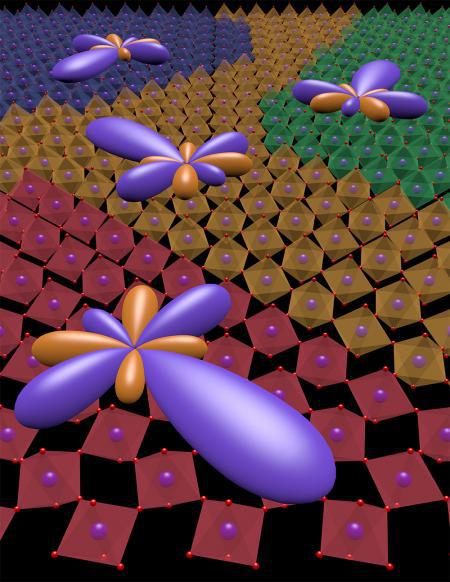Unusual phase of matter uncovered

Physicists from the California Institute of Technology (Caltech) have discovered a phase that is characterised by an unusual ordering of electrons. It is said that the phase could hold the solution to a longstanding mystery in condensed matter physics having to do with high-temperature superconductivity — the ability for some materials to conduct electricity without resistance, even at ‘high’ temperatures approaching -100°C.
“The whole field of electronic materials is driven by the discovery of new phases, which provide the playgrounds in which to search for new macroscopic physical properties,” said David Hsieh, the leader of the Caltech team. However, he added, “The discovery of this phase was completely unexpected and not based on any prior theoretical prediction.”
Writing in the journal Nature Physics, Hsieh and his colleagues explain how they were testing a laser-based measurement technique to look for what is called multipolar order, ie, where the electrons in a material are not ordered by a scalar or vector but by something with more dimensionality, like a matrix. The group utilised optical harmonic generation — an effect in which a tiny amount of light is reflected off an illuminated object at integer multiples of the incoming frequency. These multiples are called optical harmonics.
The group’s experiment exploited the fact that changes in the symmetry of a crystal will affect the strength of each harmonic differently. Since the emergence of multipolar ordering changes the symmetry of the crystal in a very specific way — a way that can be largely invisible to conventional probes — their idea was that the optical harmonic response of a crystal could serve as a fingerprint of multipolar order.
“We found that light reflected at the second harmonic frequency revealed a set of symmetries completely different from those of the known crystal structure, whereas this effect was completely absent for light reflected at the fundamental frequency,” said Hsieh. “This is a very clear fingerprint of a specific type of multipolar order.”

The compound that the researchers studied was strontium-iridium oxide (Sr2IrO4), a member of the class of synthetic compounds broadly known as iridates. Over the past few years, there has been a lot of interest in Sr2IrO4 owing to certain features it shares with copper-oxide-based compounds (cuprates) — the only family of materials known to exhibit superconductivity at temperatures exceeding 100 K (-173°C).
Structurally, iridates and cuprates are very similar. Like cuprates, iridates are electrically insulating antiferromagnets that become increasingly metallic as electrons are added to or removed from them through a process called chemical doping. A high enough level of doping will transform cuprates from insulators into high-temperature superconductors; as this evolution takes place, they transition through a mysterious phase known as the pseudogap, where an additional amount of energy is required to strip electrons out of the material.
Recently, a pseudogap phase also has been observed in Sr2IrO4 — and Hsieh’s group has found that the multipolar order they have identified exists over a doping and temperature window where the pseudogap is present. The researchers are still investigating whether the two overlap exactly, but Hsieh said the work suggests a connection between multipolar order and pseudogap phenomena.
“There is also very recent work by other groups showing signatures of superconductivity in Sr2IrO4 of the same variety as that found in cuprates,” he said. “Given the highly similar phenomenology of the iridates and cuprates, perhaps iridates will help us resolve some of the longstanding debates about the relationship between the pseudogap and high-temperature superconductivity.”
For decades, scientists have debated the origin of the pseudogap and its relationship to superconductivity — whether it is a necessary precursor to superconductivity or a competing phase with a distinct set of symmetry properties. If that relationship were better understood, scientists believe, it might be possible to develop materials that superconduct at temperatures approaching room temperature.
Hsieh and his group believe their findings offer possibilities for new electronic device functionalities. Hsieh added that multipolar orders might exist in many more materials, “and that’s exactly what we are pursuing next”.
Microplastics found to alter the human gut microbiome
Microplastic-treated cultures showed a consistent and significant increase in acidity (lower pH...
Sustainable, self-repairing, antimicrobial polymers developed
From medicine to electronics and optics, new materials developed by scientists at Kaunas...
A better way to create conductive polymers
New research disproves the longstanding belief that to create conductive polymers, substances...





